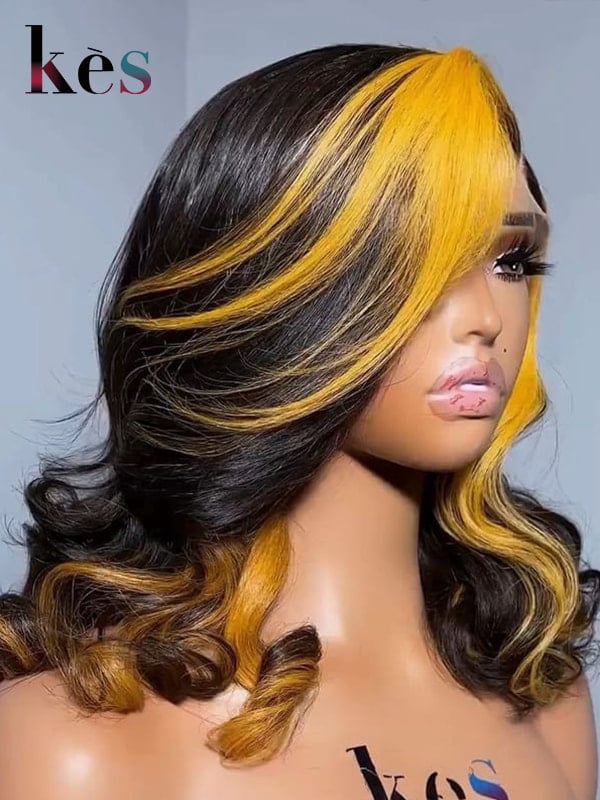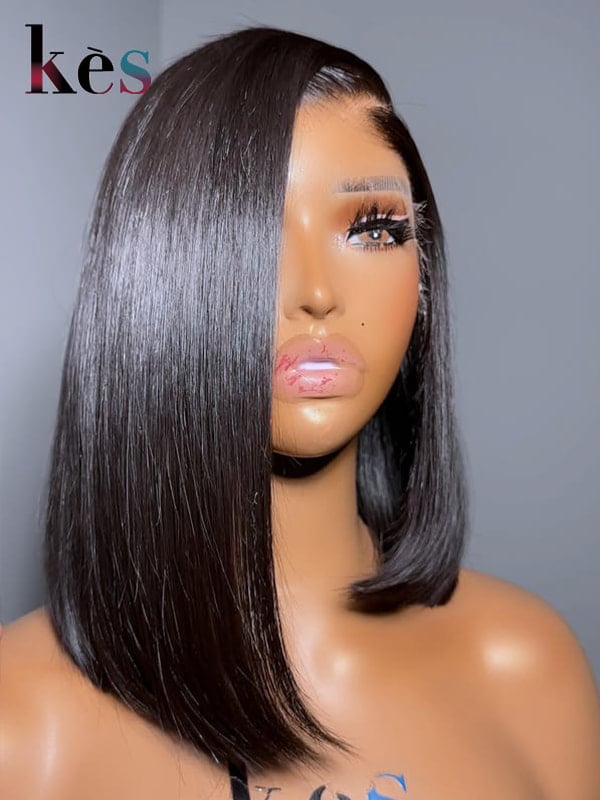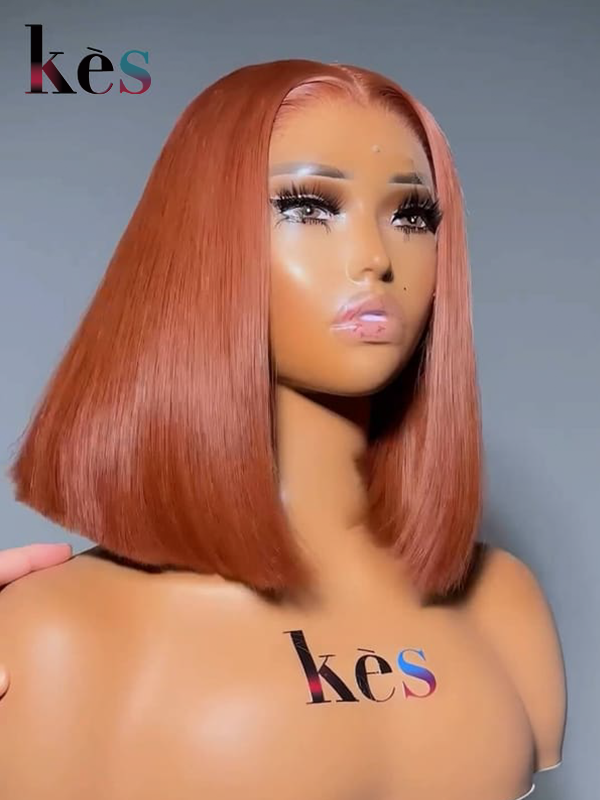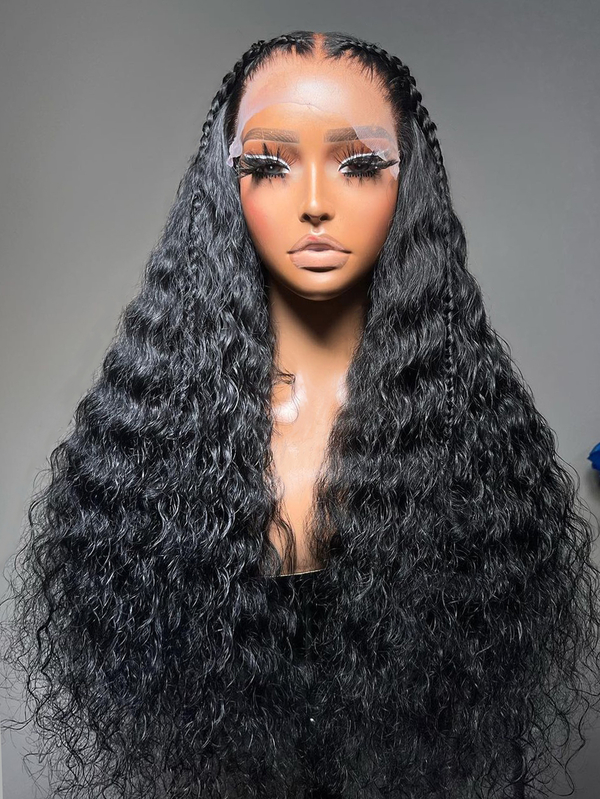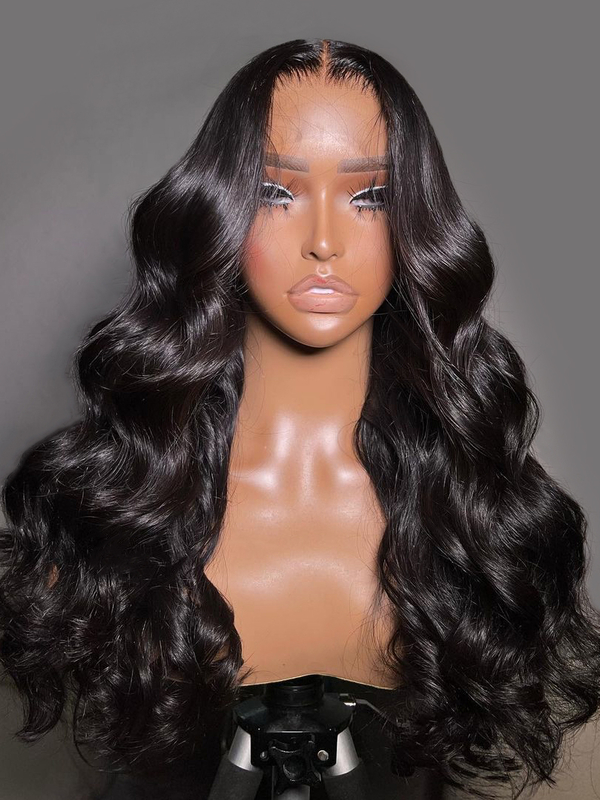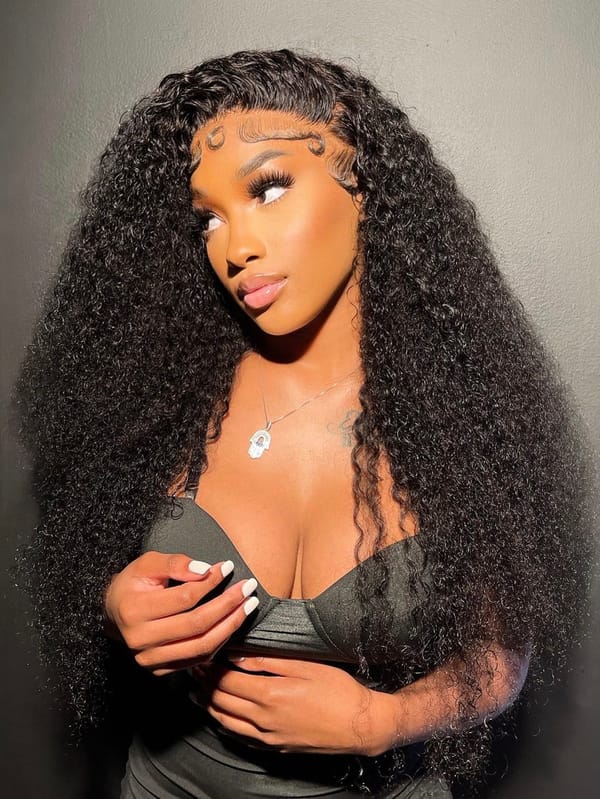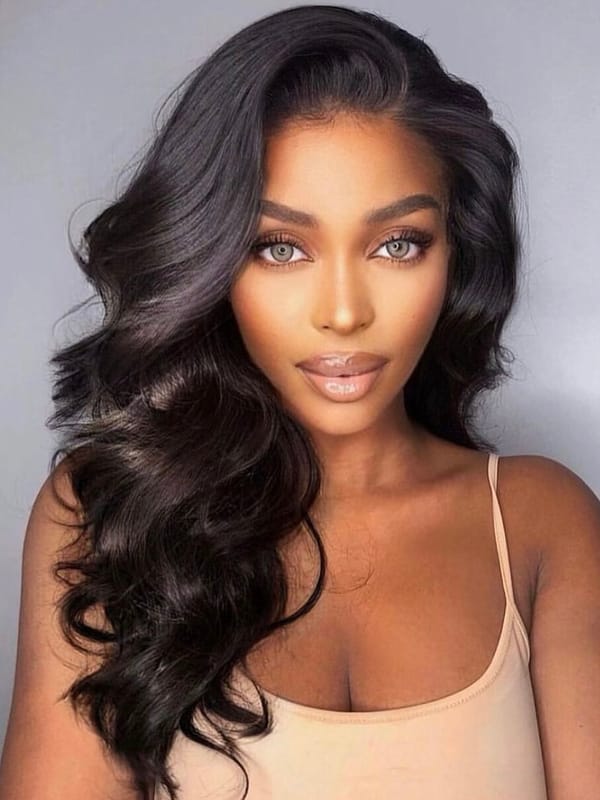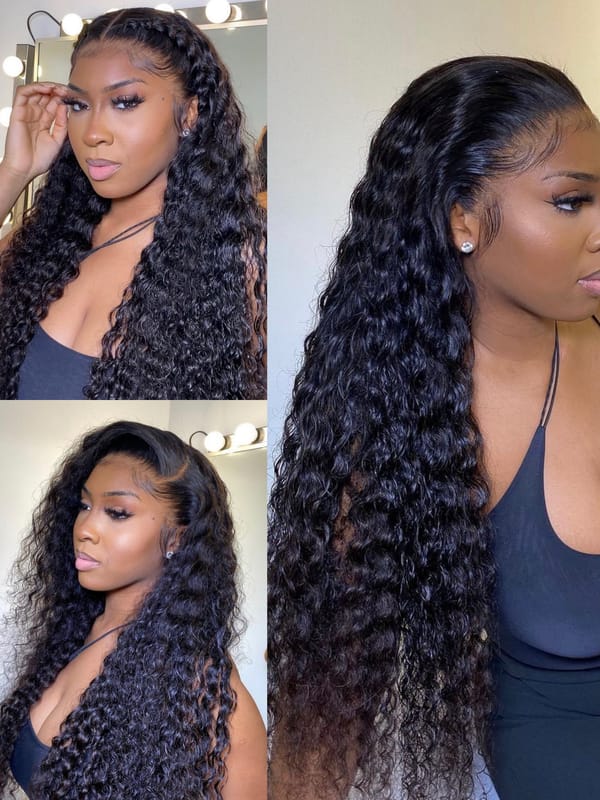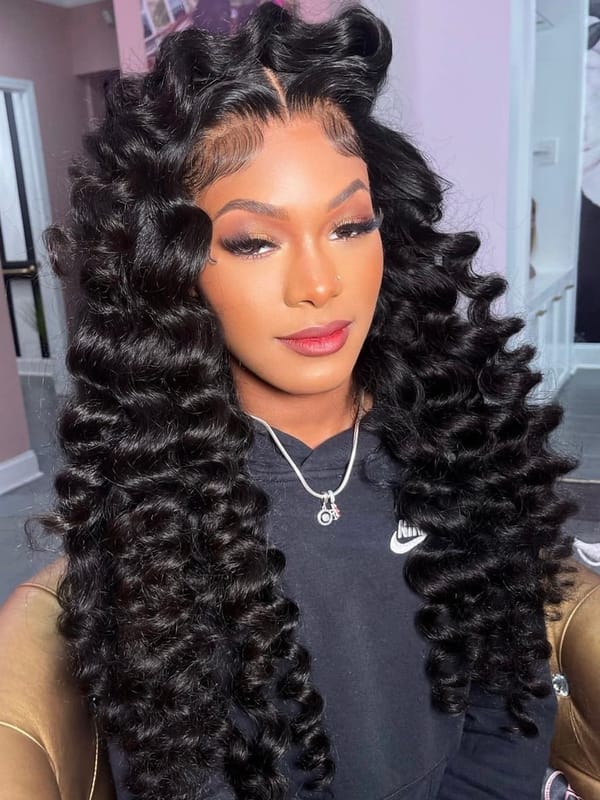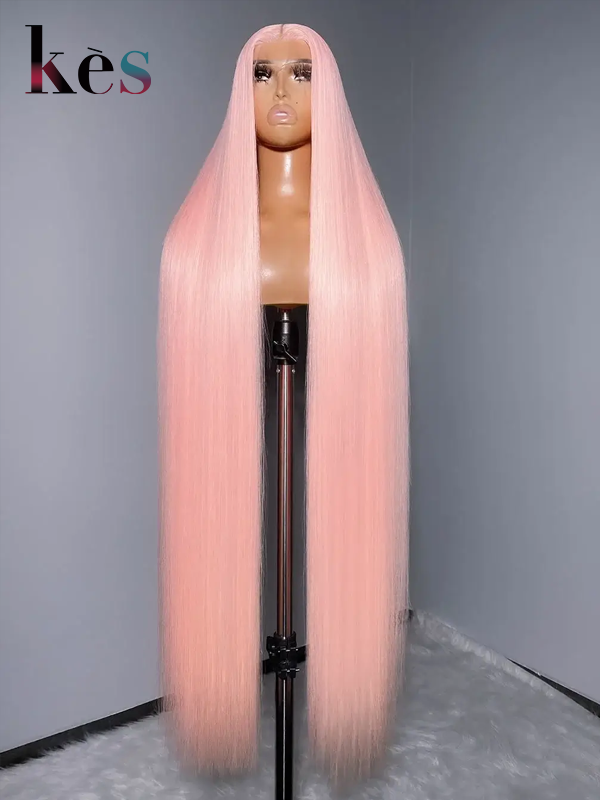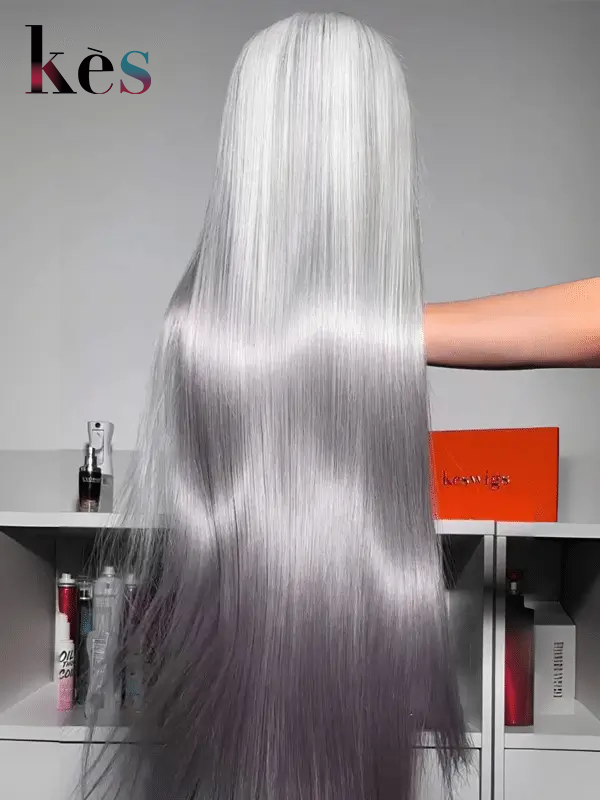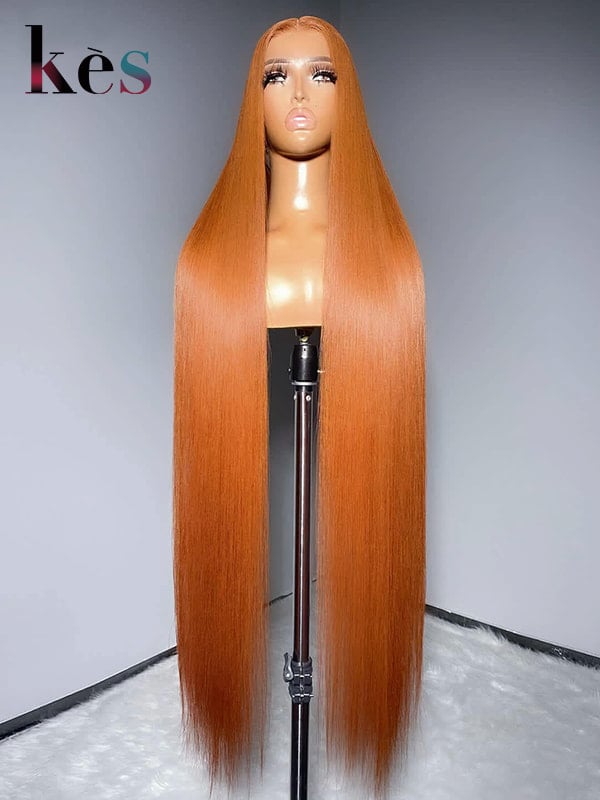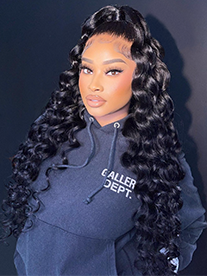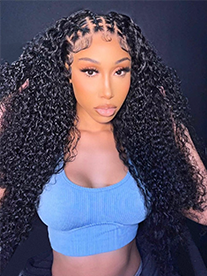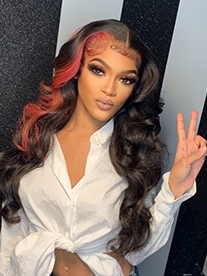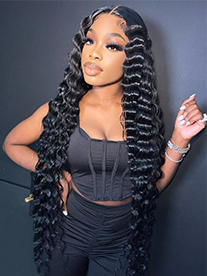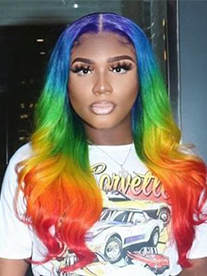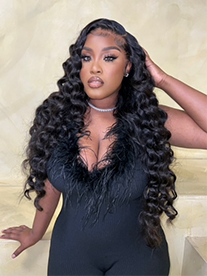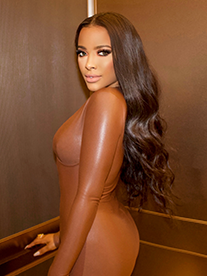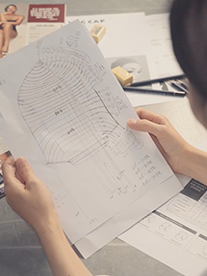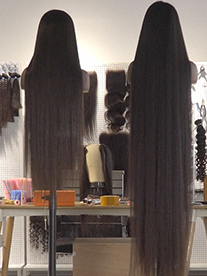
Human Hair Wigs Vs Synthetic
Wigs are pretty common fashion accessories used ìn place of hair to alter or complete an appearance. They are also worn by people suffering from hair loss. Due to their popularity, wigs come in a variety of styles on the market.
Traditional wigs, lace front wigs, and full lace wigs are just a few types of wigs. But they are also differentiated by the material they are made out of. Typically, wigs are made from human hair or synthetic hair, or even a combination of both.
Naturally, there are advantages and disadvantages to each type. To make the most out of your shopping, you must carefully review your options before you swipe. Fortunately for you, I have spent time searching the internet to explain the key differences between human and synthetic hair wigs.
So if you want to learn more, read on!
Human Hair Wigs vs Synthetic Hair Wigs
The fiber is essentially what distinguishes synthetic and human hair wigs from one another. As stated in the name, human hair wigs are created with actual human hair, providing users with a more realistic look.
Meanwhile, synthetic wigs are made of artificial hair fibers, which can hold a style better even after washing.
It can be challenging to decide between human and synthetic hair in addition to lifestyle, purpose, and budget. Add to that the fact that some of today’s synthetic and human hair wigs look and feel nearly identical. Gone are the days when synthetic wigs felt like a subpar alternative to real hair.
That said, both have their advantages, and there are factors other than aesthetics to consider while choosing a wig.
Human Hair Wigs
Of all wig fiber types, human hair wigs offer the most natural appearance and movement. Due to that, they tend to cost more, are heavier, and need more styling time and maintenance.
Depending on how often they are worn and how well they are cared for, human hair wigs usually last more than a year.
Types of Human Hair Used in Wigs
Chinese, Indonesian, Indian, and European/Caucasian human hair are the four main varieties used to make human hair wigs. Out of the four, Asian hair is the most commonly used, especially Chinese hair since it has a thicker denier or fineness unit, resulting in extremely straight hair. However, it is more resistant to curls and thus more difficult to style.
Indonesian hair is usually used in ethnic style wigs as it is cheaper and widely available. Indian hair has a slightly thinner denier than European hair but with more texture. European hair is the most in-demand for its fine denier, but it costs a lot more due to the market’s increasingly limited supply.
Human hair wigs also have classifications. They can either be virgin human hair, Remy hair, and non-Remy hair.
- 1、Virgin hair refers to completely unprocessed hair that hasn’t been dyed, permed, colored, bleached, or chemically processed in any way.
- 2、Remy hair is human hair collected from a single source or donor, with its cuticles still intact and aligned in one direction, making it less prone to tangling.
- 3、Non-remy hair is waste hair collected from multiple donors that are chemically processed to look good. The cuticles in this hair type are stripped and tend to run in either direction. It is the cheapest but has the worst long-term quality of the three.
The pros and cons of human hair wigs are compiled as follows:
Pros
- 1、They last longer, about a year or more, depending on how they are maintained
- 2、They have a more natural look, feel, and movement
- 3、They are more versatile when it comes to styling and dyeing
Cons
- 1、Requires more maintenance for care and styling
- 2、Has less resistance to humidity and weather than synthetic wigs
- 3、Color eventually fades over time
Synthetic Hair Wigs
Synthetic hair wigs have many advantages, including affordability and ease of maintenance, and are a more budget-friendly alternative to human hair wigs.
Synthetic fibers are best used to create pre-styled wigs, hairpieces, and extensions. This is because the style and the curl pattern are almost always permanently incorporated into the wig. So, unless the wig is heat-resistant or meant for styling, it will retain its original look and shape over time.
Types of Synthetic Fiber
Acrylic, polyester, polyvinyl chloride (PVC), and Kanekalon are some examples of synthetic hair fibers. By comparing the amount of shine each fiber produces, you can quickly tell which ones are of greater quality.
Kanekalon is currently the best synthetic fiber on the market due to its heat-resistant properties, which allow it to be heat-styled to a certain extent. The texture and movement of lower-quality fibers are typically stiffer, less realistic, and appear shinier.
The pros and cons of synthetic hair wigs are:
Pros
- 1、Has a more affordable price range
- 2、Requires less effort to maintain
- 3、The set style can be retained through multiple washes
- 4、Offers a wide variety of colors and styles
- 5、Longer-lasting hair color
- 6、Lightweight
Cons
- 1、Sometimes too shiny and artificial-looking
- 2、Has a relatively shorter lifespan of about four to six months
- 3、Cannot be dyed
- 4、Unless it is heat-resistant, it can’t be styled with heat-based tools
What is The Difference Between Human Hair Wigs and Synthetic?
Besides what they are made of, their ease of care and life span, the main difference between human hair and synthetic wigs would be their versatility.
A first-time wig buyer may believe that since human hair wigs are made from natural hair, they are superior in quality. But it all depends on the quality of the human hair used. Virgin and Remy human hair wigs will bring you a much more natural look than a synthetic wig. While a non-Remy hair wig (the lowest grade of human hair wig) may give you less value than a synthet.
However, human hair wigs still have the upper hand when it comes to customizing. Whether you want to cut, straighten, curl, or dye them, it’s possible. Meanwhile, a synthetic wig is less versatile, usually maintaining a single style throughout its use.
In other words, if you’re comfortable with the same hairstyle and want something more affordable, synthetic wigs are a good option. But if you prefer switching up your style every now and then, you’ll do better with a human hair wig.
FAQs
Here are the frequently asked questions regarding Human Hair Wigs Vs Synthetic and their quick answers.
Which type of wig is better for curly hairstyles?
For frequent heat styling and permanent waves, human hair wigs are preferable. On the other hand, monofilament fiber “hair” used in synthetic wigs keeps its waves or curls without needing to be restyled. Straighteners and curling irons will damage synthetic wigs that are not heat-resistant.
How often should I wash my wig?
Remember that human and synthetic hair wigs wear out more quickly if washed frequently. Most synthetic wigs only need to be washed, dried, and shaken to regain their style, while human hair wigs need additional upkeep. They need to be thoroughly cleaned in addition to deep conditioning and restyling before wearing.
For synthetic wigs, it’s recommended to wash them after six to eight wears or every two to three weeks. But if you’re frequently exposed to smoke and other elements daily, you should wash it more often. Also, wigs that look and feel lifeless are indicators that they need washing.
On the other hand, human hair wigs require washing every seven to ten wears, or every six to eight weeks. If you often style your wig with chemical products like shaping cream or hairspray, you’ll need to wash and rejuvenate it more often. You might also need to wash your wig more if you live in a humid or rainy area.
Will humidity affect the type of wig I should buy?
Yes, humidity will affect the type of wig you should buy. Synthetic wigs can withstand being subjected to any weather. But depending on the overall quality and human hair type, human hair wigs may become frizzy or lose volume due to the weather.
Outro
The ideal wig for you depends on the hair fiber you want. In general, it is more convenient to use a synthetic wig for daily wear, but for special occasions, you might want to opt for a human hair wig. Nevertheless, having a few different wig options can help you have more style choices, so consider getting both if your budget allows it.
Please feel free to leave a comment below if you have any thoughts, opinions, or further explanations.













